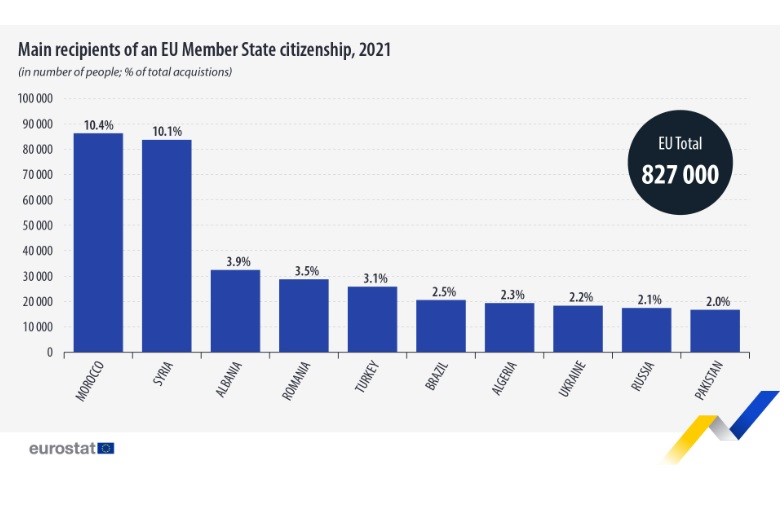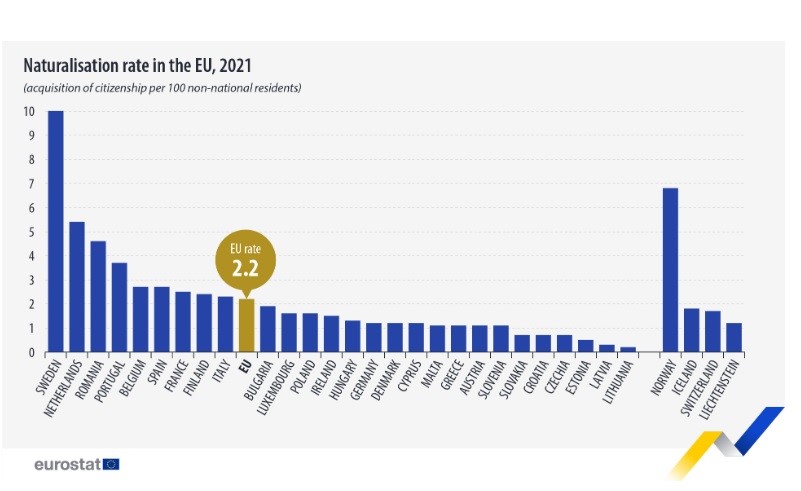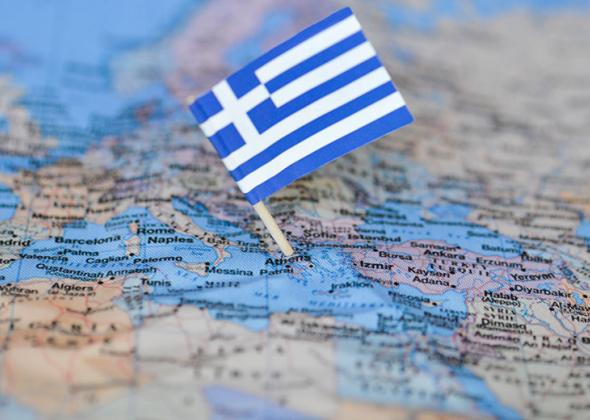The largest increases in acquisitions in absolute terms were recorded in France (+43 900 French citizenships granted compared with 2020), Germany (+18 800), Spain (+17 700), Sweden (+9 200) and Austria (+7 200).
In contrast, the largest decreases were observed in Italy (-10 300 Italian citizenships granted compared with 2020), Portugal (-7 600), Greece (-3 200), Finland (-1 200) and Cyprus (-800). In total, there were 10 EU countries that recorded a decrease in the number of citizenships granted.
As in 2020, the majority (85%) of those who obtained citizenship of an EU Member State in 2021 were previously citizens of a non-EU country or stateless. Citizens of another EU country accounted for 13% of the total number of citizenships acquired.
On 1 January 2022, EU citizens represented 94.6% of the EU population.
This information comes from data on acquisition of citizenship published by Eurostat
Moroccans, Syrians, Albanians continue to be main recipients of EU Member State citizenship in 2021
In 2021, similar to 2020, Moroccans were the largest group among new EU citizens (86 200 people, of whom 71% acquired citizenship of Spain or France), ahead of Syrians (83 500, 70% acquired citizenship of Sweden or Netherlands), and Albanians (32 300, 70% acquired citizenship of Italy). Romanians (28 600, 33% acquired citizenship of Italy) were also part of this top 10 list of recipients of EU citizenship, followed by Turks (25 700, 48% acquired German citizenship), Brazilians (20 400, 65% acquired citizenship of Portugal or Italy), Algerians (19 300, 80% acquired citizenship of France), Ukrainians (18 200, 37% acquired citizenship of Poland and Italy) Russians (17 300, 45% acquired citizenship of Germany and France) and Pakistanis (16 600, 62% acquired citizenship of Spain and Italy).

Romanians (28 600 persons), Poles (12 500) and Italians (10 100) remained the three largest groups of EU citizens acquiring citizenship of another EU Member State, unchanged from previous years.
The majority of new citizenships were granted by Spain (144 000; 17% of EU total), France (130 400; 16%), Germany (130 000; 16%), Italy (121 500; 15%) and Sweden (89 400 or 11%) accounting for 75% of new citizenships granted in the EU in 2021.
Highest naturalisation rate in Sweden
The naturalisation rate is the ratio of the number of persons who acquired the citizenship of a country during a year over the stock of non-national residents in the same country at the beginning of the year.

In 2021, the highest naturalisation rate among EU countries was registered in Sweden, with 10.0 citizenships granted per 100 resident non-nationals. Sweden was followed at a distance by the Netherlands (5.4), Romania (4.6), Portugal (3.7) and Belgium and Spain (both 2.7).
At the other end of the scale, naturalisation rates below 1 citizenship acquisition per 100 resident non-nationals were recorded in Lithuania (0.2), Latvia (0.3), Estonia (0.5), and Czechia, Croatia and Slovakia (all 0.7).















